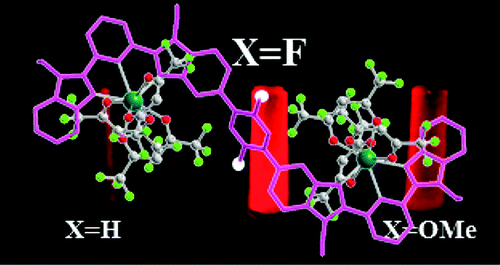-
Anion-π and Cation-π Interactions on the Same Surface
K. Fujisawa, C. Beuchat, M. Humbert-Droz, A. Wilson, T.A. Wesolowski, J. Mareda, N. Sakai and S. Matile
Angewandte Chemie International Edition, 53 (42) (2014), p11266-11269


DOI:10.1002/anie.201407161 | unige:40859 | Abstract | Article HTML | Article PDF
Herein, we address the question whether anionâÏ and cationâÏ interactions can take place simultaneously on the same aromatic surface. Covalently positioned carboxylateâguanidinium pairs on the surface of 4-amino-1,8-naphthalimides are used as an example to explore pushâpull chromophores as privileged platforms for such âionâpairâÏâ interactions. In antiparallel orientation with respect to the pushâpull dipole, a bathochromic effect is observed. A red shift of 41 nm found in the least polar solvent is in good agreement with the 70 nm expected from theoretical calculations of ground and excited states. Decreasing shifts with solvent polarity, protonation, aggregation, and parallel carboxylateâguanidinium pairs imply that the intramolecular Stark effect from antiparallel ionâpairâÏ interactions exceeds solvatochromic effects by far. Theoretical studies indicate that carboxylateâguanidinium pairs can also interact with the surfaces of Ï-acidic naphthalenediimides and Ï-basic pyrenes.

